In this tutorial, we will discuss temperature sensors, their workings, and their applications. A temperature sensor is a device that measures the temperature of anything or any place. In these sensors, RTD (resistance temperature detector) elements are used for measuring a temperature, which is made by wrapping a fine wire around a ceramic or glass. Normally, copper, nickel, or platinum wire is used for RTD elements. The thermocouple is also used in temperature sensors, which are made from two different materials and generate a voltage when a temperature is changed. These voltages are directly proportional to temperature, meaning that when a temperature increases, the voltage also increases; similarly, when a temperature decreases, the voltage also decreases. We can see the various types of temperature sensors in the figure below.
Different Types of Temperature Sensor
Normally, six types of temperature sensors are currently on the market:
Thermocouple
This is the most common type of temperature sensor. It also abbreviates TC. This is very low-cost, self-powered, and has a voltage-generating temperature sensor, which means its voltages change with changing temperature. We can use this for long distances, and different types of thermocouple-type sensors are available on the market for different distances. The thermocouple-type temperature sensor is shown in figure 2.
Resistance Temperature Detector (RTD)
The resistance temperature detector sensor works on the principle of resistance change by changing temperature. Resistance is directly proportional to temperature and has a wide range of temperature measurement capabilities. These are more accurate temperature sensors and have ranges between -270 °C and 850 °C.
Thermistors
This is the third type of temperature sensor, which is less costly in comparison to other types and is very easy to use. The working principle of a thermistor-type temperature sensor is the same as that of an RTD-type temperature sensor, which means resistance changes by changing temperature. These are made with nickel or any ceramic-type material. We can see the thermistor-type temperature sensor in the figure below.
Thermometer
It is a device that measures the temperature of any glass solid or liquid. In this type, we use mercury or alcohol in a tube whose volume changes by changing the temperature. Its volume is directly proportional to its temperature. For a thermometer-type temperature sensor, refer to the figure below.
IR Sensors
These are electronic and non-contacting sensors that have a certain characteristic such that they can detect and emit IR radiation. Normally, two types of IR sensors are currently available on the market: the first is an infrared sensor, and the second is a quantum infrared sensor. It detects the temperature by means of radiation. Its cost depends on its working capabilities, which means its accuracy level depends on its cost. In other works, low cost has a low accuracy level, and high cost has a high accuracy level. We have an IR sensor in the figure below.
ICs of Temperature Sensors
Semiconductor sensors are the sixth type of temperature sensor that are available on the market in the form of ICs. These are called temperature IC sensors. This sensor divides into different types, such as current output sensors whose output current changes by changing temperature, voltage output sensors whose output voltage changes by changing temperature, silicon temperature sensors with resistance output whose output resistance changes by changing temperature, digital output temperature sensors, diode temperature sensors, etc. Currently, available temperature sensors provide high accuracy and high linearity over an operating temperature range of almost 55 °C to +155 °C. Popular temperature sensors that are easily available on the market are AD 590, LM 35, TMP 102, LM 94023, and LMT 84. For a semiconductor temperature sensor (IC TMP 102), refer to the figure below. These digital temperature sensors have high accuracy in replacing the thermistor.
Working Operation of LM 35 Sensor
The LM 35 temperature sensor mounts in the same way as the other sensors. It means that in a PCB board or any other way, its temperature will be within the range of 0.01 °C in comparison to the surface temperature. Let’s suppose the ambient air temperature is the same as the surface temperature, but when the air temperature is lower or higher than the surface temperature, the actual temperature of the LM 35 sensor would be at an intermediate level between the air temperature and the surface temperature.
This sensor has so many applications in the fields of process control and the environment. This sensor also includes tests for communication and measurement purposes. It directly calibrates in Celsius (Centigrade) and has a full operating range between -55 °C and +150 °C. This sensor is very low-cost due to water level trimming, very low self-heating, making it suitable for remote applications, and it operates at 4 to 30 V. It also has a typical non-linearity level between +/- 1/4 °C. We can see the LM 35 sensor in the figure below.
Applications of Temperature Sensor
In this section, we provide a list of the different applications of temperature sensors.
- Electric motors use these for measuring the motor winding temperature, internal housing temperature, bearing temperature, brush temperate, and external body temperature.
- These are useful in electric cables for measuring the cable’s internal temperature. In this application, their use is in the form of a heat-shrink tube or metal housing.
- These are useful in mechanical engines for measuring the engine oil temperature and engine bearing temperature.
- The heating control systems use these sensors for applications such as in buildings where we need the temperature controls to switch on or off the heating or cooling system.
- These are useful in HVAC (heating ventilation and air conditioning) systems for controlling the temperature of shopping mall buildings, university buildings, hospital buildings, and industrial and commercial buildings.
- The humidity and air conditioning equipment frequently use these sensors.
- These sensors are frequently useful in water-incoming tubes for measuring the internal temperature of the water.
- These sensors have so many applications in renewable energy applications, such as solar heating pumps, biomass combustion applications, wind power applications, epithermal regulation applications, geothermal drilling applications, and rail vehicles.
- These sensors are useful in rubber and plastic industry.
- These sensors also have so many applications in biomedical industry.
Advantages of Temperature Sensor
By using these sensors, the motor temperature could be controlled easily and motor could be on or off automatically and save the motor.
- By using these sensors, the electric cables could be saved from burning due to overheating.
- By using these sensors, the user could easily control the engine oil and bearing temperature.
- By using these sensors, the user can easily control the room temperature automatically by swathing on or off the cooling system.
- By using these sensors, the user can easily control the humidity and air conditioning of their buildings.
- By using these sensors, the user can easily check the water’s condition and switch on or off the water heater and control the monthly bill.
- By using these sensors, the drilling operator could easily control heating and cooling the drill in geothermal applications.
Conclusion
In conclusion, this tutorial provides an in-depth overview of temperature sensors. It covers a basic introduction, types of sensors along with the applications to help us better understand the concept. Hopefully, this was helpful in expanding your knowledge.
You may also like to read:
- ESP32 ESP-NOW Two way Communication (Arduino IDE)
- Design Full Adder Circuit in Labview: Tutorial 32
- Design Three Phase Inverter using Simulink MATLAB
- ESP32-CAM Take Photo and Save to MicroSD Card with Timestamp Date and Time
- IoT Protocols: A Comprehensive Guide to Different Smart Home Protocols
- Difference between Mainframes and Mini Computers
This concludes today’s article. If you face any issues or difficulties, let us know in the comment section below.




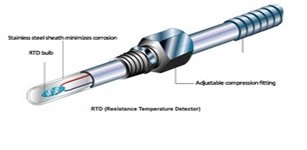
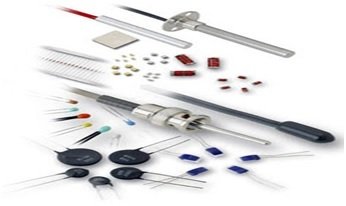
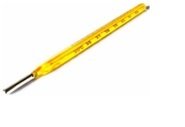
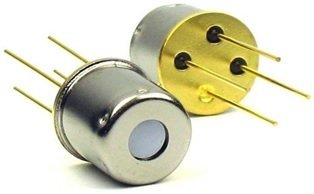
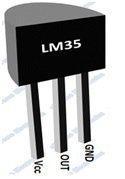
engaging content on temperature sensors and i personally prefer RTDs as they are the most accurate ones